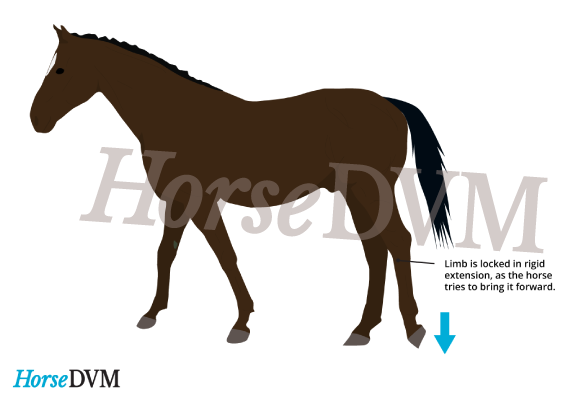Veterinary advice should be sought before applying any treatment or vaccine.
Upward Patellar Fixation, Locking Stifle

| Therapies | Details | |
|---|---|---|
| Conditioning exercise | Work on hills, particularly uphill may result in complete resolution of UFP in affected horses. | |
| Corrective trimming and shoeing | Shortening the toe to facilitate breakover, and correction of any mediolateral imbalance. Some horses may show benefit from rounding the medial aspect of the foot to promote medial breakover, in addition to elevation of the lateral heel using a wedge-heel shoe. | |
| Estrogen compounds | Administration of 1 mg of estradiol cypionate via intramuscular injection (IM) per 45 kg of body weight (11 mg/500 kg) once weekly for 3 to 5 weeks. Has been shown to be beneficial for some horses, however the exact reasoning is unclear. | |
| Iodine-containing counterirritants | 2% solution of iodine in almond oil or ethanolamine oleate, injected into and around the medial and middle patellar ligaments has shown to be of benefit for help in thickening and strengthening the medial ligament. | |
| Vitamin B12 | Most effective when used in younger horses with milder UFP signs. | |
| Acupuncture/Aquapressure | Is most beneficial and effective for horses with mild UFP. | |
| Medial patella ligament splitting (MPLS) | A type of surgical treatment that may be necessary in some cases, and has been found to be highly effective, with 97.6% of the 85 horses which received treatment having a complete recovery of UFP immediately after the surgery or within the 2-week rehabilitation period. There was no reported recurrence of UFP signs or long-term complications associated with the surgery in horses that received the surgery. |